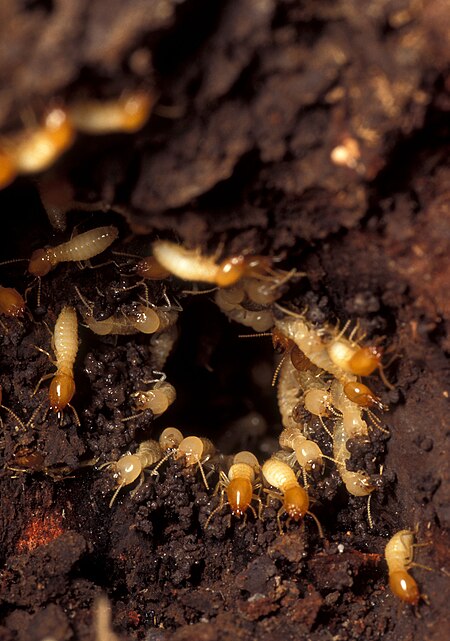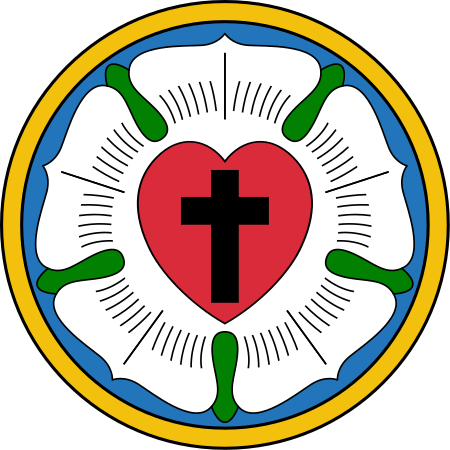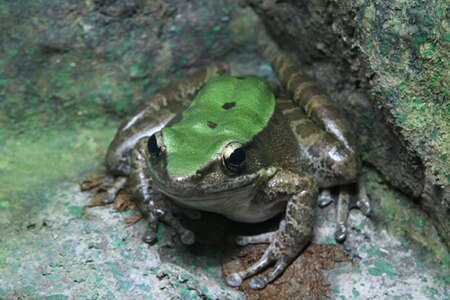Double-stranded RNA viruses
| |||||||||||||||
Read other articles:

Egyptian queen of the 12th dynasty Nofret IIStatue of Nofret IIBurialLahun (possibly)SpouseSenusret IIDynasty12th of EgyptFatherAmenemhat II Nofret II (her name means Beautiful One) was an ancient Egyptian queen of the 12th dynasty. She was a daughter of Amenemhat II and wife of Senusret II.[1] Nofret II, 12th dynasty, Cairo Museum Along with Khenemetneferhedjet I she was one of the two known wives of Senusret II; his other two possible wives were Khenemet and Itaweret. All four were als…

Urban park in Madrid, Spain This article may require copy editing for grammar, style, cohesion, tone, or spelling. You can assist by editing it. (March 2023) (Learn how and when to remove this message) Retiro ParkParque del Buen RetiroLocationMadrid, SpainCoordinates40°24′54″N 03°41′02″W / 40.41500°N 3.68389°W / 40.41500; -3.68389Area142 hectares (350 acres)Created1680Operated byCity Council of MadridStatusPublic park UNESCO World Heritage SiteCriteriaCul…

Artikel ini membutuhkan rujukan tambahan agar kualitasnya dapat dipastikan. Mohon bantu kami mengembangkan artikel ini dengan cara menambahkan rujukan ke sumber tepercaya. Pernyataan tak bersumber bisa saja dipertentangkan dan dihapus.Cari sumber: Tanah – berita · surat kabar · buku · cendekiawan · JSTOR (Oktober 2019) Artikel ini membahas tanah sebagai benda bentukan alam. Untuk tanah sebagai objek hukum, lihat artikel lahan. Profil tanah, memperlihatkan…

This article is about the cartoon. For other uses, see Gift Wrapped. 1952 American filmGift WrappedDirected byI. FrelengStory byWarren Foster[1]Produced byEdward SelzerStarringMel BlancBea BenaderetNarrated byDaws ButlerMusic byCarl StallingAnimation byArthur DavisManuel PerezVirgil RossKen ChampinLayouts byHawley PrattBackgrounds byIrv WynerColor processTechnicolorProductioncompanyWarner Bros. CartoonsDistributed byWarner Bros. PicturesRelease date February 16, 1952 (1952…

Sculpture by Andrea Palladio Jewel of VicenzaTop: recent reconstructionBottom: painting of model from the 16th CenturyArtistGiorgio Capobianco, Andrea PalladioYear1578 (1578), 2012-13 (2012-13)TypesculptureMediumsilverDimensions25 cm (10 in); 58 cm diameter (23 in)Conditionlost and rebuiltLocationMuseo Diocesano, Vicenza The Jewel of Vicenza (Italian: Gioiello di Vicenza) was a silver model[1] of the city of Vicenza made as an ex-voto in the 16th cen…

Dutch car manufacturer This article needs additional citations for verification. Please help improve this article by adding citations to reliable sources. Unsourced material may be challenged and removed.Find sources: Ruska car – news · newspapers · books · scholar · JSTOR (July 2017) (Learn how and when to remove this message) 123 Lauriersgracht, Amsterdam Ruska B1 buggy 1980 Ruska Classica Ruska Regina Ruska was a car manufacturer based in the Neth…

2016年美國總統選舉 ← 2012 2016年11月8日 2020 → 538個選舉人團席位獲勝需270票民意調查投票率55.7%[1][2] ▲ 0.8 % 获提名人 唐納·川普 希拉莉·克林頓 政党 共和黨 民主党 家鄉州 紐約州 紐約州 竞选搭档 迈克·彭斯 蒂姆·凱恩 选举人票 304[3][4][註 1] 227[5] 胜出州/省 30 + 緬-2 20 + DC 民選得票 62,984,828[6] 65,853,514[6] 得…

This article relies largely or entirely on a single source. Relevant discussion may be found on the talk page. Please help improve this article by introducing citations to additional sources.Find sources: Andorra–Ukraine relations – news · newspapers · books · scholar · JSTOR (September 2021) Bilateral relationsAndorra–Ukraine relations Andorra Ukraine Ukraine–Andorra relations – a set of international bilateral relations between Ukraine and the P…

List of events ← 2009 2008 2007 2010 in Turkey → 2011 2012 2013 Centuries: 20th 21st Decades: 1990s 2000s 2010s 2020s 2030s See also:List of years in Turkey Events in the year 2010 in Turkey. Incumbents Abdullah Gül, President, 2007–2014 Recep Tayyip Erdoğan, Prime Minister, 2003–2014 Events 8 March – The 6.1 Mw Elazığ earthquake shook eastern Turkey with a maximum Mercalli intensity of VI (Strong). Forty-two people were killed. 28 August – 2010 FIBA World Champion…

国民阵线Barisan NasionalNational Frontباريسن ناسيونلபாரிசான் நேசனல்国民阵线标志简称国阵,BN主席阿末扎希总秘书赞比里署理主席莫哈末哈山总财政希山慕丁副主席魏家祥维纳斯瓦兰佐瑟古律创始人阿都拉萨成立1973年1月1日 (1973-01-01)[1]设立1974年7月1日 (1974-07-01)前身 联盟总部 马来西亚 吉隆坡 50480 秋傑区敦依斯迈路太子世贸中心(英语:…

إسحاق شامير (بالعبرية: יצחק שמיר) مناصب عضو الكنيست[1] في المنصب21 يناير 1974 – 17 يونيو 1996 قائمة رؤساء الكنيست في المنصب1977 – 1980 إسرائيل يشايهو شرعبي إسحاق برمان رئيس وزراء إسرائيل (7 ) في المنصب10 أكتوبر 1983 – 13 سبتمبر 1984 مناحم بي…

Southern Indian cinema industries Indian cinema Assamese (Jollywood) Badaga Bengali (Tollywood) Bhojpuri (Bhojwood) Bihari Bodo Chhattisgarhi (Chhollywood) Deccani (Dollywood) Dogri (Pahariwood) English Gujarati (Gollywood) Haryanvi Hindi (Bollywood) Jharkhand Kannada (Sandalwood) Kashmiri Khasi Khortha Kokborok Konkani Kutchi Malayalam (Mollywood) Manipur Marathi Meitei Nagpuri Odia (Ollywood) Punjabi (Pollywood) Rajasthani Sambalpuri Sanskrit Santali (Sollywood) Sindhi Tamil (Kollywood) Telugu…

Type of spacecraft orbit The Earth-Moon Lagrange points A distant retrograde orbit (DRO), as most commonly conceived, is a spacecraft orbit around a moon that is highly stable because of its interactions with two Lagrange points (L1 and L2) of the planet–moon system. In more general terms, an object of negligible mass can be in a DRO around the smaller body of any two-body system, such as planet–Sun or exoplanet–star. Using the example of a spacecraft in a DRO around a moon, the craft woul…

Italian-American physicist and Nobel laureate (1905–1989) Emilio SegrèSegrè in 1959BornEmilio Gino Segrè(1905-02-01)1 February 1905Tivoli, Kingdom of ItalyDied22 April 1989(1989-04-22) (aged 84)Lafayette, California, U.S.CitizenshipItaly (1905–44)United States (1944–89)Alma materSapienza University of RomeKnown forDiscovery of antiproton, technetium, and astatineAwardsNobel Prize in Physics (1959)Scientific careerInstitutionsLos Alamos National LaboratoryUniversity of Cal…

Ada E. YonathLahir22 Juni 1939 (umur 84)YerusalemTempat tinggalIsraelKebangsaanIsraelAlmamaterHebrew University of Jerusalem, Institut Sains WeizmannDikenal atasCrio bio-cristalografiPenghargaanPenghargaan Wolf dalam Kimia (2006)L'Oréal-UNESCO Award for Women in Science (2008)Hadiah Nobel Kimia (2009).Karier ilmiahBidangCristalografiInstitusiInstitut Sains Weizmann Ada E. Yonath (lahir 22 Juni 1939) adalah direktur dan ahli Crystallograph/biologi molekuler dari Institut Sains Weizmann, Isr…

Spanish physicist This article needs additional citations for verification. Please help improve this article by adding citations to reliable sources. Unsourced material may be challenged and removed.Find sources: Blas Cabrera – news · newspapers · books · scholar · JSTOR (July 2019) (Learn how and when to remove this message) This article is about the Spanish physicist. For the US physicist and grandson of Blas Cabrera Felipe, see Blas Cabrera Navarro. In…

Loose association of Lutheran churches and churchworkers in the United States Protes'tant ConferenceClassificationLutheranOrientationConfessional LutheranPolityCongregationalRegionUnited StatesOrigin1927 WisconsinSeparated fromWisconsin Evangelical Lutheran SynodCongregations6Membersapprox. 1,000 baptized[1]Official websiteprotestantconference.org Part of a series onLutheranism in the United States Heritage of Mainline Protestantism and the Confessing Movement Augsburg Lutheran Churches …

Species of frog Green mountain frog Conservation status Data Deficient (IUCN 3.1)[1] Scientific classification Domain: Eukaryota Kingdom: Animalia Phylum: Chordata Class: Amphibia Order: Anura Family: Ranidae Genus: Odorrana Species: O. livida Binomial name Odorrana livida(Blyth, 1856) Synonyms[2] Polypedates lividus Blyth, 1856 Huia livida (Blyth, 1856) Rana livida (Blyth, 1856) Odorrana livida, also known as the green mountain frog, green cascade frog, Tenasserim fro…

ثورة تكساس التاريخ وسيط property غير متوفر. بداية 2 أكتوبر 1835 نهاية 21 أبريل 1864 من أسبابها تكساس تسببت في جمهورية تكساس الموقع تكساس المكسيكية، وجمهورية تكساس تعديل مصدري - تعديل جزء من سلسلة حول تاريخ المكسيك ما قبل كولومبوس الحكم الإسباني الغزو الإسبا…

The Great ImpersonationCuplikan yang menampilkan James Kirkwood, yang memerankan mata-mata Jerman sekaligus priyayi Inggris dengan penampilan serupaSutradaraGeorge MelfordProduserJesse L. LaskySkenarioMonte M. KatterjohnBerdasarkanThe Great Impersonation karya E. Phillips OppenheimPemeranJames Kirkwood, Sr.Ann ForrestWinter HallTruly ShattuckFontaine La RueAlan Hale, Sr.Bertram JohnsSinematograferWilliam MarshallPerusahaanproduksiFamous Players-Lasky CorporationDistributorParamount PicturesTangg…

